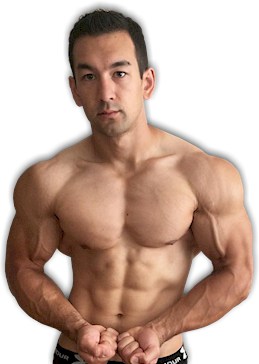WILL SQUATS AND DEADLIFTS THICKEN YOUR WAIST?
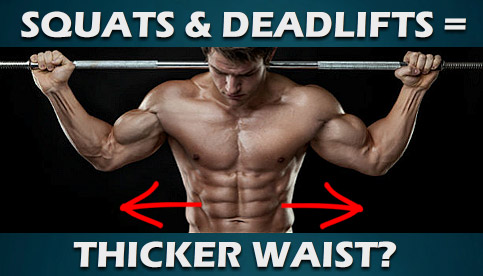
Afraid that squats or deadlifts will thicken your waist?
When it comes to achieving a lean and “aesthetic” looking physique, maintaining a slim waistline is obviously an important part of the equation.
Although squats and deadlifts are regarded as two of the most basic, fundamental compound movements for building overall total body muscle, some lifters shy away from them out of fear that they’ll result in a wide and “blocky” looking appearance around their midsection.
I’m not exactly sure where this piece of advice came from, but it most likely originated in competitive bodybuilding and fitness circles where striving for that symmetrical “v-taper” is of particular importance.
But is it really true that squats and deadlifts thicken your waist, and should you potentially skip over these exercises if this is a big concern for you?
Let’s break it down step by step…
Do Squats And Deadlifts Give You A Bigger Waistline?
When it comes to increasing the overall size of your midsection, the main muscle groups involved are the lower back, abdominals, and obliques.
Lower Back
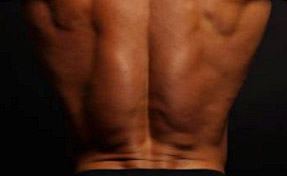
Yes, it is true that squats and deadlifts stimulate the spinal erectors fairly heavily and that they will build up your lower back area in terms of overall thickness and muscularity (see related about squats and lower back pain).
Squats specifically emphasize the lumbar erectors, while deadlifts hone in on the thoracic erectors.
However, when people talk about squats and deadlifts producing a bigger waist, the lower back region is generally not the area of concern (see more about deadlifts and lower back pain).
The muscles of the lower back can only be seen from the side and rear view when looking at an individual’s physique, and they aren’t going to hypertrophy enough that it will lead to any sort of undesirable “thick” or “blocky” appearance.
If anything, building up your spinal erectors will simply give your back a more impressive look overall.
Abs & Obliques
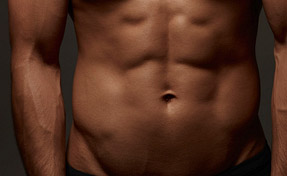
The primary muscles that come into play in terms of unwanted and “unaesthetic” waistline thickness are going to be the abs and obliques.
These are the muscles that, when overly developed, can potentially cause the midsection to appear wider and blockier in a way that detracts from your overall physique.
Excessively big obliques would increase the left-to-right width of the waist from the front view, while overly muscular abdominals could cause the stomach to protrude outward from the side view.
However, contrary to what most people think, squats and deadlifts don’t actually train the anterior core muscles to a very significant degree.
The research is fairly clear in demonstrating that other basic compound exercises such as overhead presses, pull ups, pullovers, push ups and hip thrusts activate the core just as heavily as squats and deadlifts do, and that direct ab and oblique exercises like weighted crunches, planks, leg raises, and rotational work activate it even more heavily.
There certainly is a degree of anterior core involvement during a squat or deadlift, but over-activation of these muscles during those exercises actually leads to reduced spinal stability and increased compression in the lumbar spine by forcing the spinal erectors to work unnecessarily hard to counteract the contraction of the abdominal wall.
In other words, if you’re worried about your abs and obliques becoming overly developed (or if you feel that they already are excessively muscular), squats and deadlifts are not the exercises you should be concerned about.
How To Maintain A Tight And Aesthetic Waistline
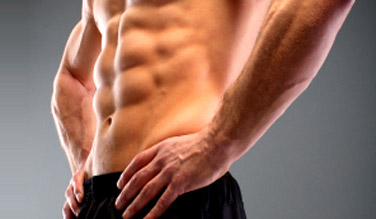
When it comes to the width and thickness of your waistline, there are a few main factors to take into account…
1) Body Fat Levels.
If you’re unhappy with the overall size of your midsection but haven’t yet leaned down to at least 12-14% body fat with reasonably visible ab definition (around 18-20% for females), there’s no reason to concern yourself with anything from a direct training standpoint until you do.
You may be under the impression that your abs and obliques have become over-developed as a result of certain factors in your workouts, but there’s a good chance that simply losing overall body fat will take care of the problem.
2) Direct Ab & Oblique Training.
Assuming you’re already relatively lean and that your abs and obliques truly are excessively muscular and are detracting from your physique, reducing the overall amount of direct core work that you perform throughout the week is going to be your best bet.
Squats and deadlifts are almost certainly not the culprit here, and it’s the frequency and volume of your ab and oblique exercises that you’ll want to moderate since this is what is likely causing the issue.
If like many trainees you’ve been hammering your core in the gym with crunches, leg raises, planks and oblique movements using high volume multiple days a week, try scaling it back to bring things more into balance.
Reduce the overall number of sets you’re performing and decrease your core training frequency to just once a week or even once every two weeks for a period of time.
In more extreme cases you can even try eliminating direct ab and oblique exercises altogether to allow them to come down in size at a quicker pace.
3) Genetics.
If your body fat levels are already in check, your ab/oblique training is on the moderate side, and you’re still unhappy with the appearance of your waist, keep in mind that it could just be an issue of your individual genetic body structure.
Some people simply have naturally wider or narrower waists than others based on how they’re built, and in that case there’s really nothing you can do about it.
Serious trainees whose primary goal revolves around aesthetics also tend to be overly critical of their own physiques as well, so it’s also possible that some of it is simply in your head and that your waist isn’t actually as wide as you think it is.
Squats And Deadlifts Thicken Waist? The Bottom Line
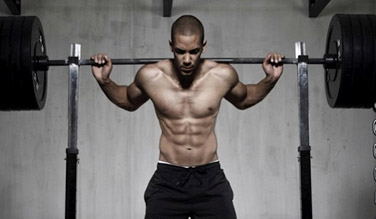
The main cause of an overly thick midsection (assuming you’re already relatively lean and have a naturally average sized waist) is the over development of the abs and obliques.
However, contrary to popular belief, squats and deadlifts don’t activate these muscles to any higher a degree than most other basic compound exercises, and they activate them to a significantly lower degree in comparison to direct ab and oblique exercises.
Squats and deadlifts technically will thicken your waist somewhat as a result of building up your lower back musculature, but this won’t lead to a wide or “blocky” appearance and there’s no need to avoid them for that specific reason.
If you do consider your waistline to be excessively thick and muscular, the most effective course of action is to reduce the amount of direct core work that you perform throughout the week, or possibly eliminate it altogether for a temporary period to allow the size of your midsection to decrease.
If you found this article helpful, make sure to sign up for your FREE custom fitness plan below...

References
1. McGill SM. Electromyographic activity of the abdominal and low back musculature during the generation of isometric and dynamic axial trunk torque: implications for lumbar mechanics. J Orthop Res 9: 91-103, 1990.
2. McGill SM. A revised anatomical model of the abdominal musculature for torso flexion efforts. J Biomech 29: 973-977, 1996.
3. Aspe RR and Swinton PA. Electromyographic and Kinetic Comparison of the Back Squat and Overhead Squat. J Strength Cond Res, 2014.
4. Bressel E, Willardson JM, Thompson B, and Fontana FE. Effect of instruction, surface stability, and load intensity on trunk muscle activity. J Electromyogr Kinesiol 19: e500-504, 2009.
5. Cholewicki J, McGill SM, and Norman RW. Lumbar spine loads during the lifting of extremely heavy weights. Med Sci Sports Exerc 23: 1179-1186, 1991.
6. Escamilla RF, Francisco AC, Kayes AV, Speer KP, and Moorman CT, 3rd. An electromyographic analysis of sumo and conventional style deadlifts. Med Sci Sports Exerc 34: 682-688, 2002.
7. Willardson JM, Fontana FE, and Bressel E. Effect of surface stability on core muscle activity for dynamic resistance exercises. Int J Sports Physiol Perform 4: 97-109, 2009.


